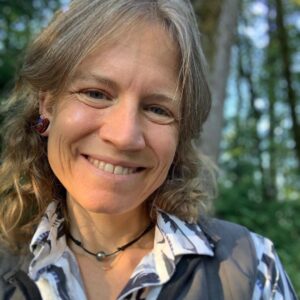Design Center
| Gerald Levine Center for Memory Care at the Loudonville Home LOUDONVILLE, NEW YORK |
| PROJECT SUMMARY Type of Facility/Setting: Memory Care Chief Administrator: Michael Levine, (518) 463-4398 Architecture: Crestuk Architecture, PC, (585) 223-2695 or (585) 738-9238 Interior Design: Burlingame Interiors, Ltd., (518) 436-1448 Photography: ¬2005 Joseph A. Crestuk, RA Resident Capacity: 16 (2 households, each with 8 single rooms) Total Project Area (sq. ft.): 8,900 Total Construction Cost: $1,424,000 Cost/Sq. Ft.: $160 Residents first |
| Keeping residents first in a client-centered design approach is this design team’s advice for the creation and operation of dementia care communities. “In fact, innovation (in facility design) is a by-product of focusing on residents’ needs and preferences during programming and design,” says Joe Crestuk, president of Crestuk Architecture, on the establishment of special care communities. Extending this philosophy, as the team explained at a recent conference of the Empire State Association of Adult Homes and Assisted Living Facilities, when you consider residents as always right and recognize that it is their perception that is the reality, the practice of accommodating resident behavior rather than controlling it becomes innate in the design process. Further, when designers consider residents’ unique profiles and understand their past lifestyles and personalities, creating social settings that “reinforce appropriate behavior” means accepting whatever each resident wants the facility to be-i.e., a place of work, a day spa, etc. The architecture and floor plan for the addition respect the team’s client-centered design principles. The addition is laid out as a dual hub consisting of two eight-bed households with a shared core and grand dining room. Varied ceiling heights emphasize the communal/common areas and define transitional spaces between households. Bedrooms open directly to living rooms rather than corridors, and all are single rooms with a private toilet. “Natural mapping” was used to reduce confusion and promote a sense of competence for the residents; this layout is characterized by fewer turns, clear circulation paths, terminal view/destination points, and good sight lines (e.g., from the resident’s bed to her toilet). The ground-floor design provides visual and physical access to well-landscaped outdoor environments. With a great room/dining core, well-appointed interiors, appropriate lighting schemes, and comfortable furniture, the facility is both resident- and family-friendly, with intimate spaces for family visits. Distinctively different furnishing schemes define each of the two households, the private rooms, and common areas designed by Fred B. Hershey, FASID, president of Burlingame Interiors. This treatment gives residents strong visual anchors to support their definition of “home.” Also included are “nesting” areas (small, intimate spaces), memory boxes, and accessory shelves in bedrooms for displaying personal items. With areas in which to play, work, and reminisce, residents are empowered to utilize their remaining talents and express themselves freely. |
Related Articles
Topics: Articles , Design











